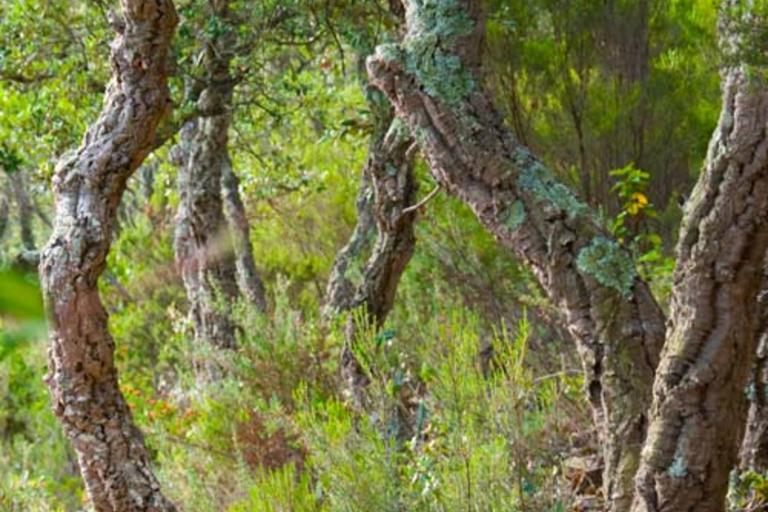
Introduction
We pass through a cork oak grove. Small trees, often with various bases, new growths from the recovery of a burnt or over-exploited forest which have to grow in fine, rocky, dry soil. Cork oaks are typical of this siliceous, sandy soil with a mild, relatively rainy climate. When they coexist with holm oaks, cork oaks move to the sunniest, driest slopes. Holm oaks stay in valleys and shady streams. The species that accompany the cork oaks are similar to those of the coastal holm oak groves but with variations in places where the forest has changed. For this reason we generally find heather, juniper, rosemary and rock-rose, amongst others. In the most humid places, Viburnum Tinus, false buckthorn and strawberry trees grow. These are great forests in which to find sought-after mushroom types like the Caesar's mushroom (Amanita caesarea). At dusk we can find giant beetles like the great Capricorn beetle (dark red, almost black, with long, thin antennae) and the stag beetle (dark in colour with jaws that look like the horns of a stag) flying around.